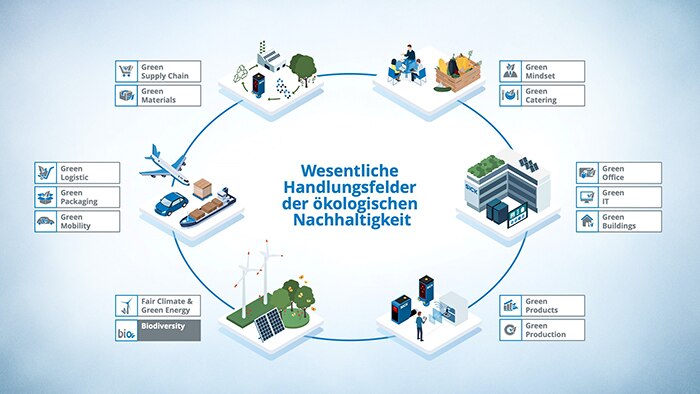Why SICK is taking action
Biodiversity is the variety of species, habitats and genetic material. The gradual loss of this diversity is a challenge for society as a whole. To preserve biodiversity, action is needed at the global and regional, but also at the local level.
In these times of climate change and resource scarcity, SICK is aware of its role in society. It hopes to counteract the loss of biodiversity at the local level, and wants to be a role model for employees and customers. Imitation is more than welcome!
Actively promoting biodiversity
In the biodiversity initiative, ideas are developed and implemented to protect and increase biodiversity at SICK sites. In the first step in 2018, biodiversity potentials were identified at several company sites.
The goal is to give biological diversity a place to thrive in the green spaces at SICK sites. These should be a home for wild bees, butterflies, lizards, grasshoppers and many other types of flora and fauna.
To this end, all open spaces in German locations are to be converted into flowering and natural meadows by 2022 (with the exception of heavily used meadows and seepage ditches). By 2025, we plan to convert open spaces of global SICK production sites into flowering and natural meadows.
Depending on suitability, individual habitats for insects, birds and bats will be established at different company sites. Many steps have already been taken, and they will be expanded in scope. Here are some examples:
- Bat hunting ground in Waldkirch: Bats are among the most endangered mammals in our country. They are not only suffering from habitat loss, but also from lack of food. Oak logs were placed at SICK headquarters which provide an essential habitat for insects, the main food source for bats. By also planting wild vines and clematis on the trunks, we can expand this habitat even more and create a large food supply for bats. Since bats primarily navigate using echolocation, they like to use linear structures as guides. The alley-shaped orientation of the oak trunks, combined with the positioning of the SICK office buildings, creates ideal conditions for hunting grounds. In addition, bat boxes were installed, where the animals can hide during the day, raise their young and hibernate.
- Buchholz deadwood stumps: The deadwood stumps at the SICK distribution center in Buchholz will provide habitats for many species of animals, including insects, birds, and bats, over the next 20-30 years. The limestone gravel scattered on the ground will also provide a habitat for other now rare animals and plants that require low fertility soil. The logs came from an ecological landscape conservation operation, meaning a planned clearcut.
- Ecological design of seepage ditches as temporary wetlands: The existing drainage ditches at the European SICK distribution center in Buchholz were also extended, their cross-section enlarged and three troughs created. An inserted layer of clay slows down the infiltration of water. This created a new ecosystem:
- Wetlands with highly specialized plants that can withstand changing dry/wet conditions
- A transition zone
- South slope zone on nutrient-rich soil
- Reforestation with bird feeding trees and native tree species: SICK organizes an annual climate academy for children and young people at selected locations. In the joint planting activities with “Plant for the Planet”, more than 150 trees and shrubs, including rare and ecologically valuable species such as wild service tree and European service tree, have been planted at SICK so far.
